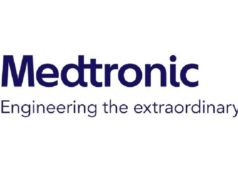
Passive recharge burst spinal cord stimulation (B-SCS) can alleviate pain intensity and psychological distress, and improve physical function and health-related quality of life out to two years, according to the latest data from the TRIUMPH study.
This prospective, international, multicentre, single-arm, post-market study—the 24-month findings of which were recently published in the journal Spine by Timothy Deer (The Spine and Nerve Centers of the Virginias, Charleston, USA) and colleagues—aimed to assess the long-term safety and efficacy of spinal cord stimulation using a passive recharge burst stimulation design for chronic intractable pain in the trunk and/or limbs.
According to the researchers, B-SCS “uniquely mimics neuronal burst firing patterns in the nervous system and has been shown to modulate the affective and attentional components of pain processing”.
Study participants received a permanent spinal cord stimulation implant—either a Prodigy, Prodigy MRI or Proclaim Elite implantable pulse generator (Abbott)—and returned for follow-up at six, 12, 18 and 24 months. The latest 24-month data show that the significant improvements in physical, mental and emotional functioning that were seen at six months were also maintained out to two years.
Pain catastrophising scale (PCS) scores dropped below the population norm. Meanwhile, health-related quality of life on EQ-5D improved across all domains and the mean index score was within one standard deviation of the population norm.
Pain reduction, as measured by a numerical rating scale, was found to be statistically significant (p<0.001) at all timepoints. Patient-reported pain relief, a stated percentage of improvement in pain, was consistent at all timepoints at 60%.
Patients also reported significant improvements across all other measures including activity levels and impact of pain on daily life. At 24 months, 84% of subjects said they were satisfied and 90% said they would recommend the procedure.
In addition, patients were able to decrease their chronic pain medication intake for all categories—38% reduced psychotropic and muscle relaxants, 46% reduced analgesic, anti-convulsant and non-steroidal anti-inflammatory drugs, and 48% reduced opioid medication.












